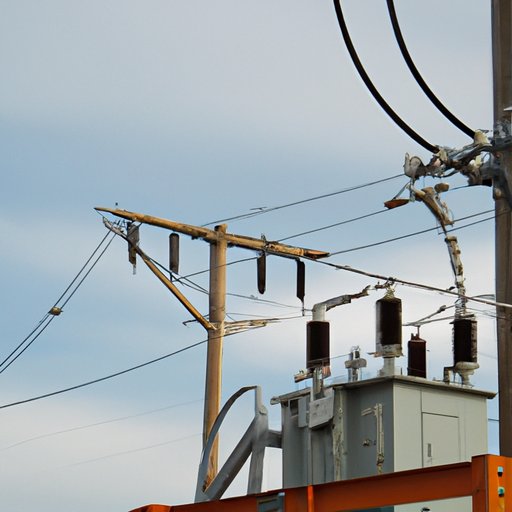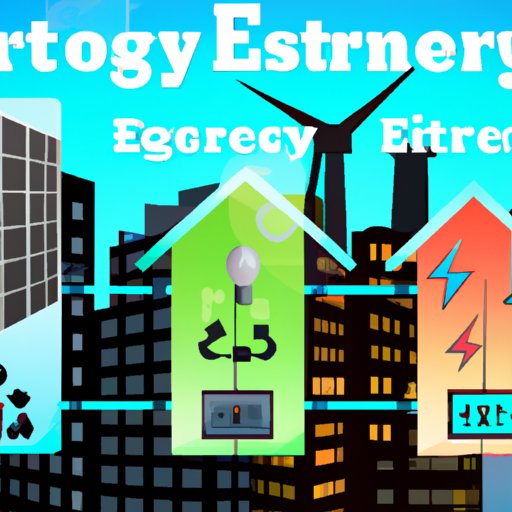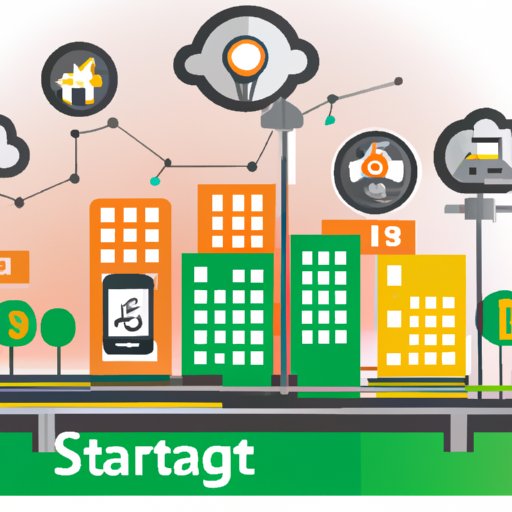Introduction
Smart grid technology is an advanced form of power system infrastructure that utilizes modern technologies to improve the efficiency, reliability, and sustainability of electricity generation and distribution. The goal of smart grid technology is to provide reliable, affordable, and sustainable electricity to customers in an efficient manner, while also reducing carbon emissions. Smart grids are designed to be more intelligent than traditional power systems and can respond quickly to changes in demand and supply, allowing for better energy management.

Components of a Smart Grid System
A smart grid system consists of several components that work together to ensure efficient energy delivery. These components include automation technology, communication technology, storage technology, and sensors and meters. Automation technology includes automated control systems that allow for automatic switching between energy sources, as well as automatic adjustment of power output to meet changing customer needs. Communication technology enables real-time monitoring and control of the grid, as well as data collection and analysis. Storage technology provides flexible storage capacity for excess energy generated and helps maintain an uninterrupted supply of electricity. Finally, sensors and meters enable real-time monitoring of energy use and help identify opportunities for energy efficiency improvements.

Impact of Smart Grid Technology on Energy Efficiency
Smart grid technology has the potential to significantly improve energy efficiency by providing more accurate information about energy use and enabling more efficient energy management. For example, the use of smart meters and sensors can provide real-time feedback on energy use, helping to identify inefficient energy use and areas where energy efficiency can be improved. Additionally, the ability to automatically switch between different energy sources can reduce energy waste by ensuring that only the most efficient source is used at any given time.
In addition to improving energy efficiency, smart grid technology also has the potential to reduce carbon emissions. According to a study conducted by the International Energy Agency (IEA), “smart grid technologies have the potential to reduce global CO2 emissions by up to 15% by 2050”. This reduction in emissions can be attributed to the increased efficiency of energy generation and delivery enabled by smart grid technology, as well as its ability to facilitate the integration of renewable energy sources into the power grid.
Different Types of Smart Grid Technologies and Their Uses
There are several different types of smart grid technologies, each of which has its own specific benefits and applications. Automation technology is used to automate the process of switching between different energy sources and adjusting power output. Communication technology enables real-time monitoring and control of the grid and data collection and analysis. Storage technology provides flexible storage capacity for excess energy generated, allowing for more efficient energy management. Finally, sensors and meters enable real-time monitoring of energy use, helping to identify opportunities for energy efficiency improvements.

Demonstrating How Smart Grid Technology Can Help Reduce Carbon Emissions
Smart grid technology has the potential to play an important role in reducing global carbon emissions. By increasing the efficiency of energy generation and delivery and facilitating the integration of renewable energy sources into the power grid, smart grid technology can help reduce the amount of energy wasted and ensure that clean, renewable energy sources are utilized whenever possible. Additionally, the use of smart meters and sensors can help identify opportunities for energy efficiency improvements, further reducing energy consumption and carbon emissions.
As an example of how smart grid technology can help reduce carbon emissions, consider the case of San Diego Gas & Electric (SDG&E). In 2014, SDG&E implemented a number of smart grid technologies, including automated control systems, advanced metering infrastructure, and storage technology. As a result of these technologies, the company was able to reduce its carbon emissions by 2.4 million metric tons over five years, making it one of the most successful utility companies in terms of reducing carbon emissions.
Conclusion
Smart grid technology is a powerful tool for improving energy efficiency and reducing carbon emissions. By utilizing modern technologies such as automation, communication, storage, and sensors and meters, smart grids can provide reliable, affordable, and sustainable electricity to customers in an efficient manner. Additionally, smart grid technology can help reduce energy waste and promote the use of renewable energy sources, further reducing carbon emissions. Finally, smart grid technology can help identify opportunities for energy efficiency improvements, leading to even greater reductions in carbon emissions.
In conclusion, smart grid technology is a promising tool for improving energy efficiency and reducing carbon emissions. By utilizing the latest technologies and taking advantage of the potential of smart grids, businesses and individuals can take steps towards a cleaner, more sustainable future.
(Note: Is this article not meeting your expectations? Do you have knowledge or insights to share? Unlock new opportunities and expand your reach by joining our authors team. Click Registration to join us and share your expertise with our readers.)
